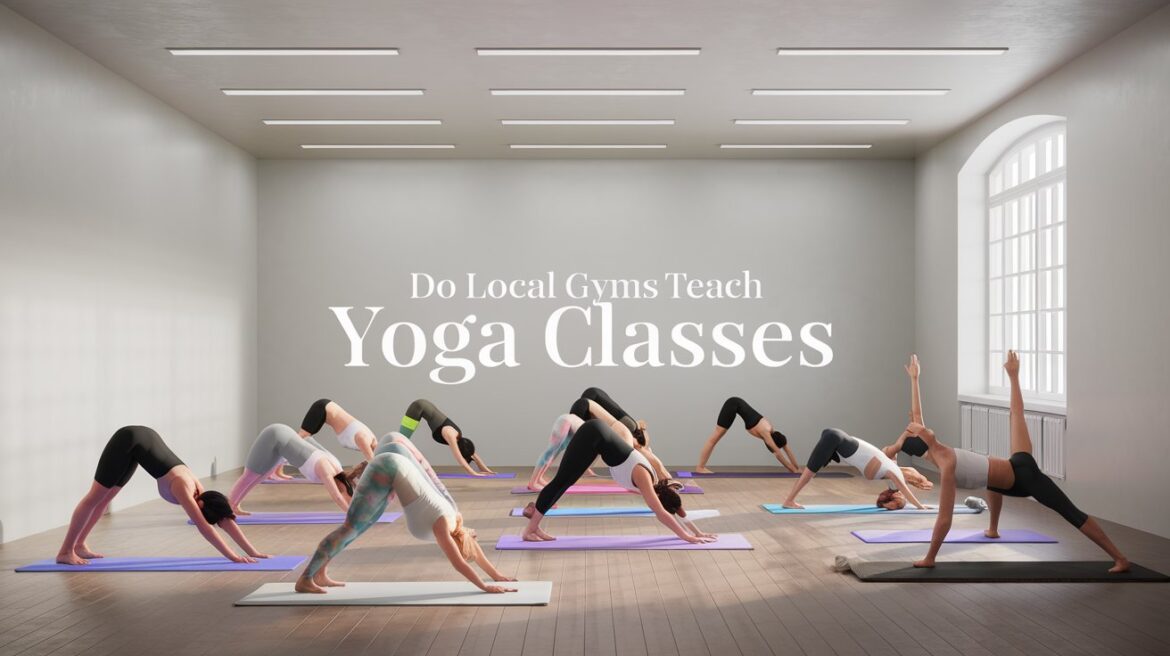Introduction
Yoga has emerged to be one of the cornerstones of workout routines all over the world, combining physical exercise with mental recharging. Local gyms often include yoga classes as a means to attract membership interested in varied workout routines. This report delves into the existence, advantages, and hands-on tips on practicing yoga at your local gym.
What Gyms Incorporate Yoga for Their Memberships
The aim of the gym is to present well-rounded fitness options to its members. Yoga improves flexibility, reduces stress, and is best utilized in conjunction with other strength or cardio-based exercises. Any age or ability level has great appeal for participation in yoga.
Common Yoga Types in Gyms
Hatha Yoga
Practice basic postures and breathing
Vinyasa Yoga
Dynamic flows for full-body workout
Restorative Yoga
Emphasize relaxation and gentle stretches
Power Yoga
Combination traditional poses with a fitness-oriented approach.
Availability of Yoga in Local Gyms
Availability of Classes
Most gyms will include classes for yoga as part of their standard or premium membership; while others offer free trial sessions or pay per class.
Class Timing and Availability
Classes are usually at most peak times found at a gym
There are options for those who go early, late, and even in the weekends
How to Find Yoga Classes at Your Gym
Checking Online: Check the websites or social media of gym schedules.
Contact Faculty: Know the teachers, class sizes, and equipment.
Location Visit: Evaluate the atmosphere and facility
Benefits of Yoga in a Gym
Practicality
Yoga can be done with other exercises in one location and thus saves time and energy.
Cost Effectiveness
Gym yoga classes are more affordable than studio-based yoga classes. As it is easily available, people will resort to gyms as their place to practice yoga.
Community Feel
The gym enables member-to-member bonding through the conduct of group yoga classes.
Gym Yoga vs. Yoga Studios
Environment and Focus
Gyms prioritize fitness, while studios emphasize mindfulness and traditional practices.
Instructor Qualifications
Studios often employ certified yoga specialists, whereas gym instructors may have broader fitness credentials.
Class Sizes
Gyms typically have larger groups, reducing individual attention compared to studios.
Maximizing Your Yoga Experience at the Gym
Preparation Tips
Arrive early to set up your mat and relax.
Wear breathable, stretchable clothing suitable for yoga.
Bring essentials like a water bottle and a yoga towel.
Class Selection
Select a class that fits your skill level to avoid accidents and to enjoy better.
Consistency
Attend classes regularly to get better results and master poses.
Gym Yoga Alternatives
Online Yoga Classes
Virtual classes allow flexibility for those who can’t make it to the in-person classes.
Community Yoga Events
Look for local community centers or parks for free or low-cost yoga sessions.
Challenge Solutions
Overcrowded Classes
Go early or opt for off-peak timings.
Limited Equipment
Bring your own yoga mats or props if the gym does not provide those.
Beginner Concerns
Ask for beginner classes or ask your instructors for any alternatives.
FAQs
Do most gyms have yoga classes?
No, not all gyms offer yoga. It is up to the facility and what it is capable of offering.
How much do gym yoga classes typically cost?
They usually come under membership plans or minimal add-on fees.
Are the classes in gyms good for beginners?
Yes, mostly all have classes that are appropriate for beginners.
What do I carry to a gym yoga class?
Mat, water bottle, and comfortable clothes
Yes, you can but very few gyms offer advanced classes; dedicated studios may offer more choices.
Conclusion
Local gyms offer yoga classes as a practical, affordable means of improving the physical and mental states of an individual. By reviewing schedules, facilities, and instructor qualifications, one can easily incorporate this type of activity into a fitness routine in pursuit of a healthier life.

